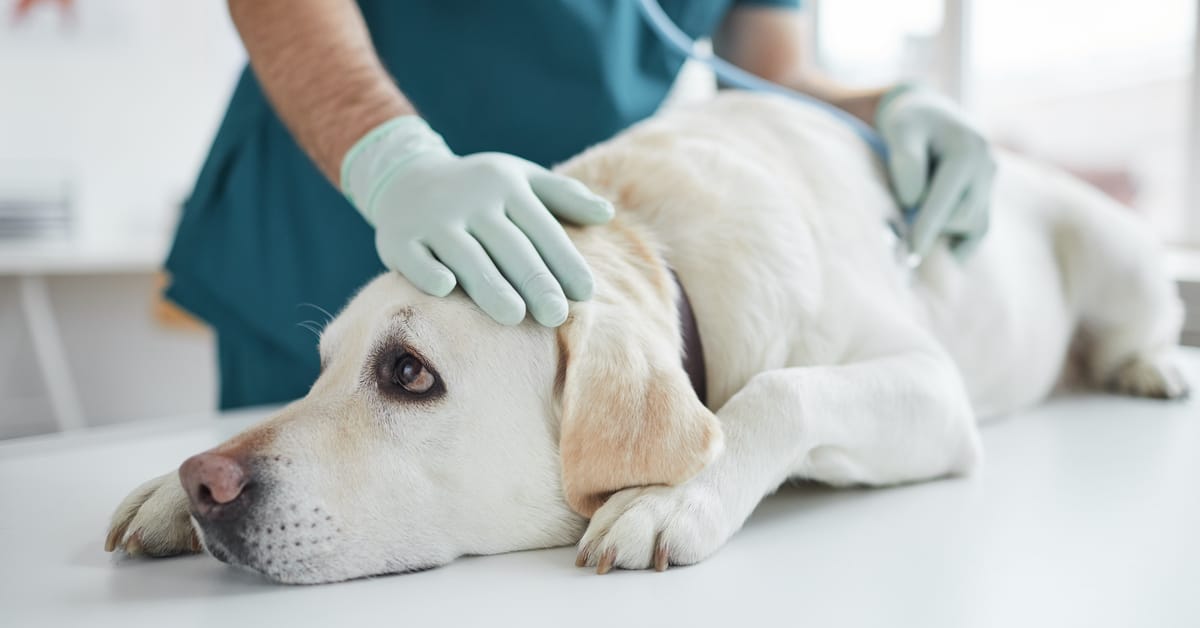You’ve probably heard about Staph infections (pronounced “staff”), but you might not know that there is also such a thing as a Staph infection in dogs.
But what is a Staph infection, and when should you worry? Here are the facts.
What are Staphylococcus bacteria?

Staphylococcus aureus is a common bacteria that is well-known to cause Staph infections in humans. It can also cause Staph infections in dogs, but it is not the most common species to do so.
Staphylococcus pseudintermedius, S. schleiferi, and S. hyicus are the species of Staph bacteria that more commonly affect dogs and cats.
Staphylococcus pseudintermedius is found near the mouth of dogs. It usually isn’t contagious to humans, but it is often implicated in certain types of Staph infections. There is also a version of the Staph bacteria known as multi-drug resistant Staph or MDR Staph.
This is a very dangerous form of the Staph bacteria, given that there are resistant strains to the antibiotic called methicillin. If that is the case with the Staphylococcus aureus species, it is known as MRSA, which stands for methicillin-resistant Staph aureus.
MRSA is not only resistant to many different antibiotics, but it also has several virulence factors that make it more damaging to the body’s defense mechanisms. MRSA is not found that frequently in dogs and cats, but it can cause problems, and it may be possible for humans to transmit it to their pets.
Even though MRSA is not as common in dogs and cats, many Staphylococcus bacteria are found in all breeds of dogs and can cause an infection at any age.
The bacteria can cause ear infections, skin infections, infections of the respiratory system, and even eye infections. Such infections can also result in abscesses on the skin or mouth.
What are the Symptoms of Staph Infections?

Because the Staph bacteria is so widespread in the environment and has the capacity to cause an infection in different areas of the body, there are many different possible symptoms.
In general, the symptoms include the following:
- Fever
- Pain
- Loss of appetite (anorexia)
- Skin irritation — red and inflamed skin
- Hot spots
- Skin abscesses
- Mouth abscesses
- Infections of the eyes, skin, ears, eyes or respiratory system
- Itching (pruritus)
- Inflammation marked by pus-filled lesions or pustules or pimples (pyoderma)
- Patchy fur loss with moist skin, crusting, and peeling of skin
- Excessive itching, chewing, and/or licking
In dogs, it is also possible that bacterial skin infections can spread to the bloodstream and cause systemic problems like toxic shock syndrome. It can even get into the joints and result in arthritis.
What are the Common Causes of Staph Infections?

The common causes of Staph infections include cuts, scrapes, or other wounds that become infected with the bacteria present on the skin or around your dog’s mouth.
It is also possible for contaminated material to enter your dog’s nose, mouth, or eyes from the surrounding environment. Your dog might also ingest contaminated materials.
In these cases, it is usually young dogs whose immune systems have not fully developed or older dogs whose immune systems are worn down who are more susceptible to developing an infection.
It is also possible for secondary infections to compromise your dog’s immune system, which may allow environmental Staph bacteria to cause an infection. Additionally, other pathogens like bacterial or fungal infections can infect the blood and wear down the immune system.
Allergies can also compromise the immune system and cause skin irritations, which cause your dog to lick the area and spread Staph bacteria near his mouth to the affected area. In fact, allergic skin disease is the most common reason for chronic Staph infections in dogs.
The exact mechanism of this is not fully understood, but experts hypothesize that the itchiness caused by skin allergies causes the dog to damage his own skin surface, and that, in combination with the direct effect of the allergies on your dog’s skin, makes it more suitable for growing the Staph bacteria.
How are Staphylococcal Infections Diagnosed?

If you think your dog has a Staph infection, your veterinarian will need to examine him. It is likely that they will want to do various tests to make a diagnosis.
These will probably include a bacterial culture and a skin biopsy or cytology. It is also important, however, that your DVM identify any secondary infections and treat those as well. If they are not properly addressed, the Staph infection will likely return.
Your veterinarian will swab any lesions to grow out and identify the bacteria involved. This can also help them determine which course of antibiotics to recommend. Once they are certain of the diagnosis, they can recommend the proper treatment.
How are Staph Infections Treated?

The typical treatment for a Staph infection involves oral antibiotics, like clindamycin, but other treatments may also be necessary.
If the infection involves your dog’s skin, your veterinarian might also prescribe antibacterial shampoos or a topical ointment. This will help control it and relieve the symptoms.
When applying topical ointments and shampoos, it’s important to remember that Staph infections can spread to humans. It’s a good idea to use gloves and wash your hands carefully after coming into contact with the infected area.
The course of treatment can take several weeks to resolve the situation. It will be important to let your vet know of any other medications or supplements your dog is taking. Do this to avoid any drug interactions that might affect the treatment choice or harm your dog.
If your dog has an internal infection, antibiotics may be used in conjunction with more intensive treatments specific to your dog’s case. This may involve inserting stents to drain fluid and even surgery.
Final Thoughts
Staphylococcus bacteria is found commonly in the environment and on animals and humans. While the resulting infections are typically easy to resolve, complicating factors such as MRSA or a compromised immune system can make them more difficult to cure.
To keep your best friend healthy and happy, watch out for skin lesions and areas where your pooch is licking excessively. If you suspect an infection, get your furry friend to the vet as soon as possible. You’ll both rest easier if you do!

